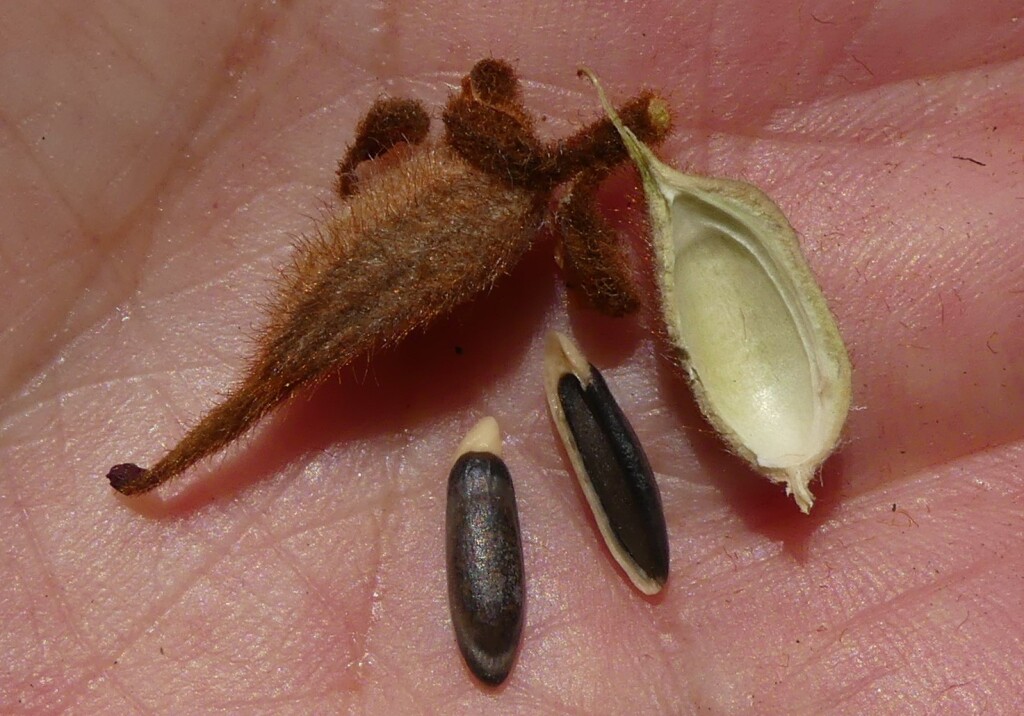Grevillea floribunda subsp. floribunda
Rusty Spider-flowerSpreading shrub 0.4–2 m high. Leaves entire, narrowly oblong-elliptic or -obovate, rarely linear, 1.5–8 cm long, 3–15(–35) mm wide; lower surface usually tomentose to velvety, sometimes silky; margin recurved to revolute, rarely obscuring the lower surface. Conflorescences terminal or occasionally axillary, decurved at the base, usually simple, 6–20-flowered, subsecund to sub-cylindric or ovoid, (1.5–)2–5 cm long; ultimate rachises 10–45 mm long, tomentose to villous; perianth greenish with a conspicuous rust-coloured indumentum, basally saccate, outer surface villous to tomentose, inner surface bearded; perianth usually persistent to fruiting stage; pistil 9–19.5 mm long, ovary sessile, villous, style reddish, villous to loosely subsericeous, pollen presenter lateral or very oblique. Fruits villous and longitudinally ridged. Flowers May–Nov.
Doubtfully indigenous in Victoria, known from a 1976 collection from Killawarra Forest (at the northern end of the Warby Ranges) and reportedly hybridising there with Grevillea alpina, and 1984 collection from Chiltern. The Killawarra record may represent a deliberate introduction, together with other non-Victorian species present at the same site (i.e. Allocasuarina diminuta subsp. diminuta). In Victoria, plants were found in Eucalyptus sideroxylon woodland. A search was undertaken in 2002 at the KIllawarra site, but no plants were found.
The dense rusty floral indumentum is diagnostic, as is the persistence of the perianth usually in the fruiting stage (but cf. G. polybractea).
Makinson, R.O. (1996). Grevillea. In: Walsh, N.G.; Entwisle, T.J., Flora of Victoria Vol. 3, Dicotyledons Winteraceae to Myrtaceae, pp. 845–870. Inkata Press, Melbourne.
 Spinning
Spinning

